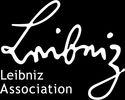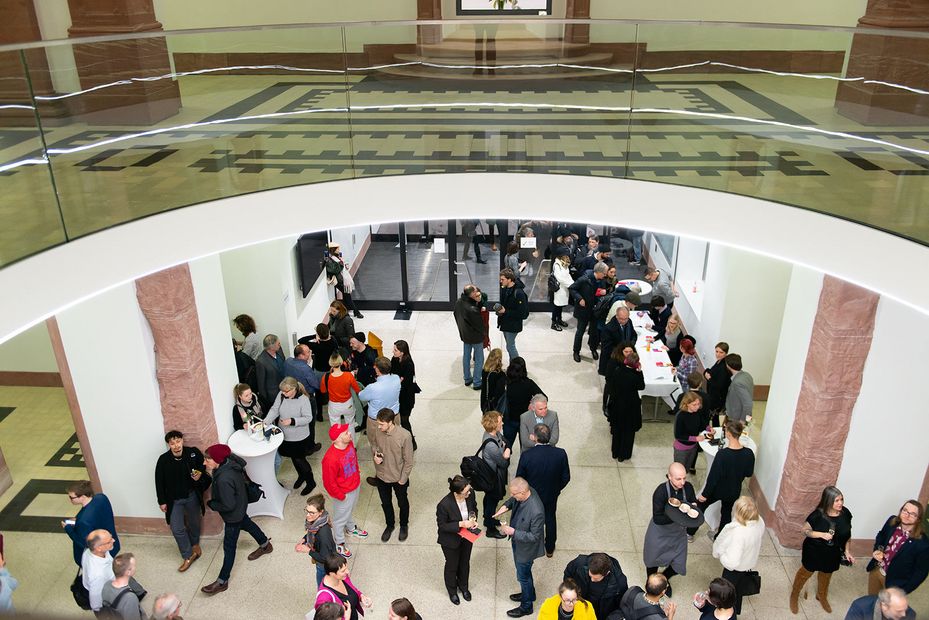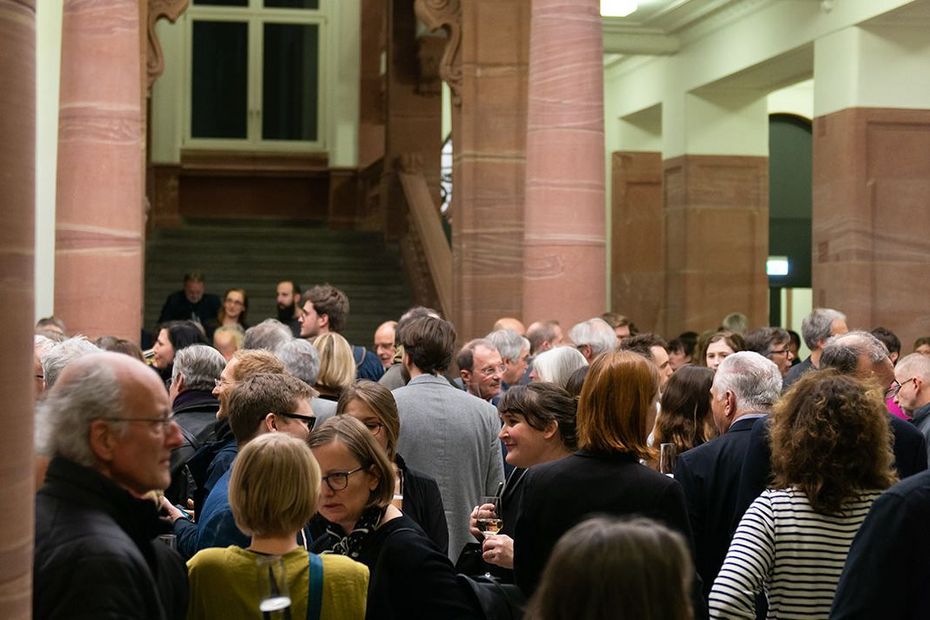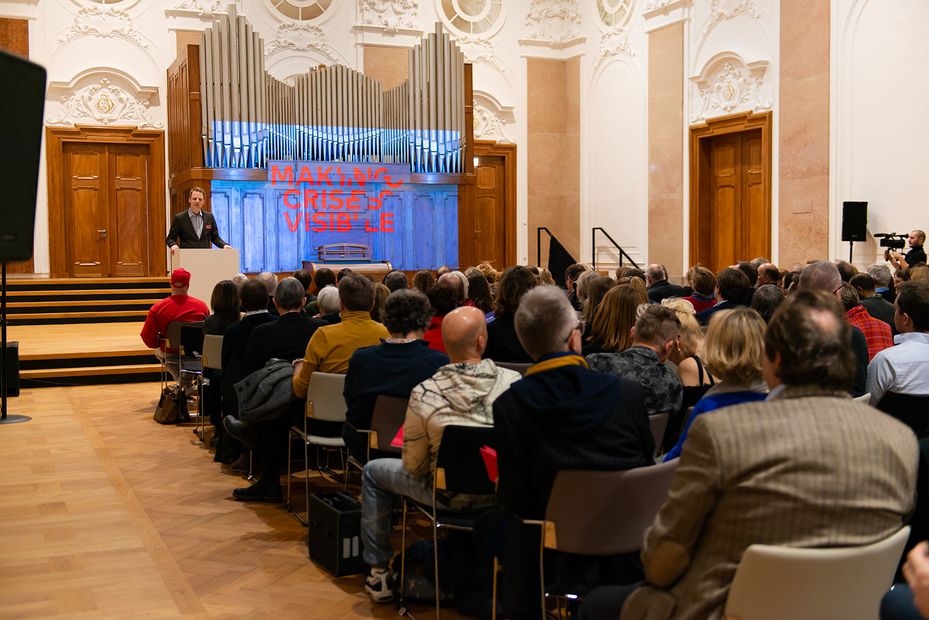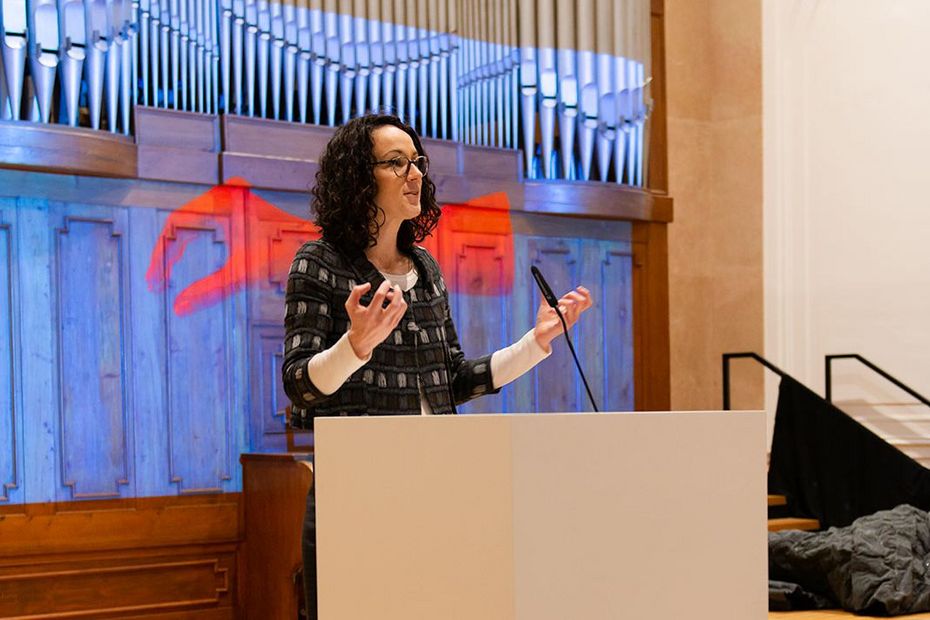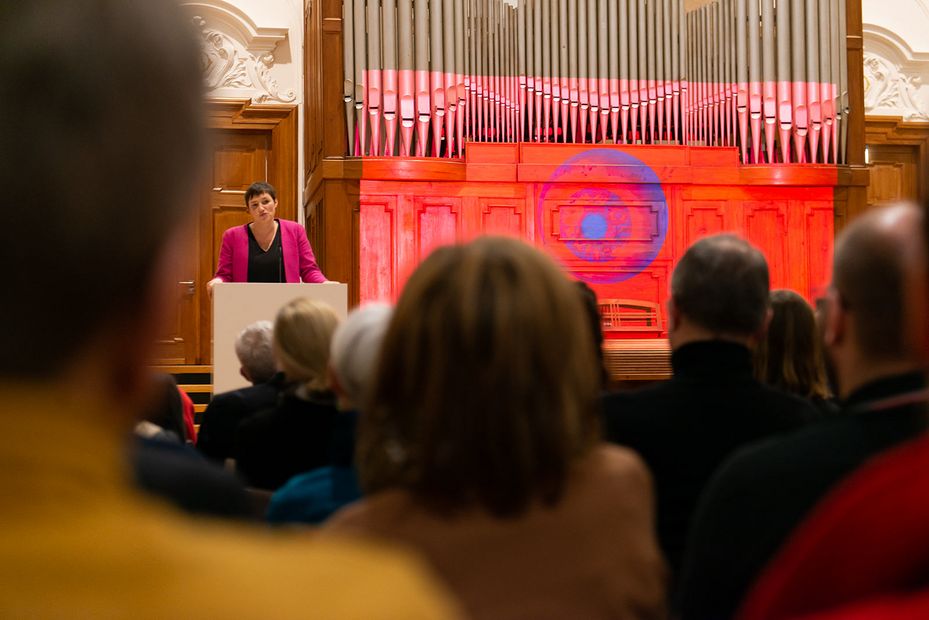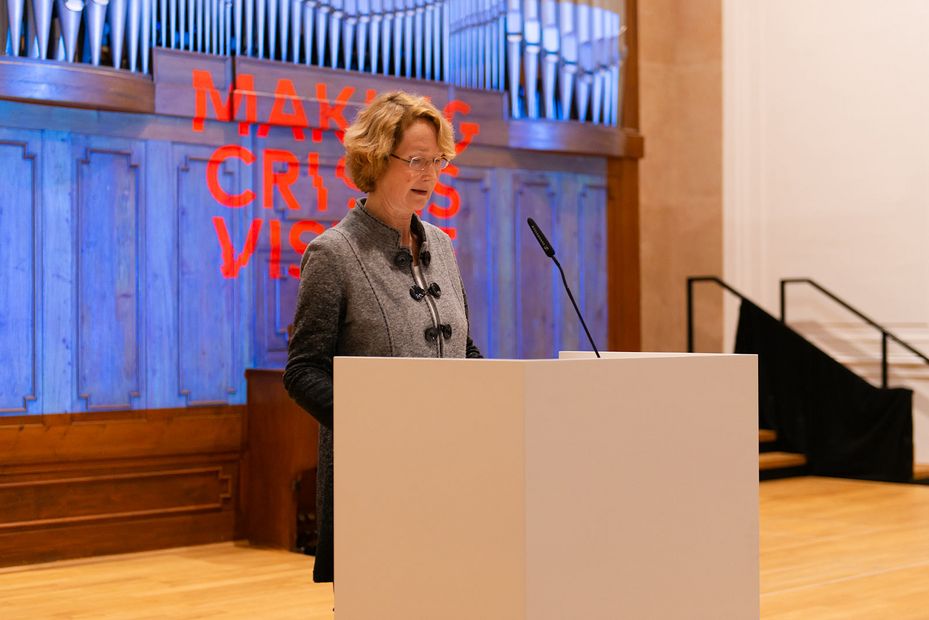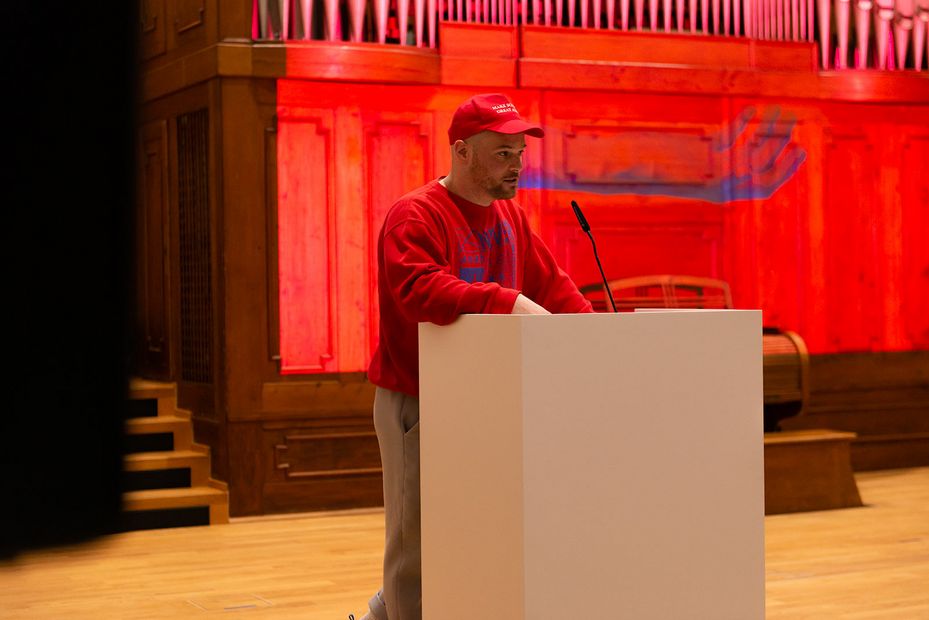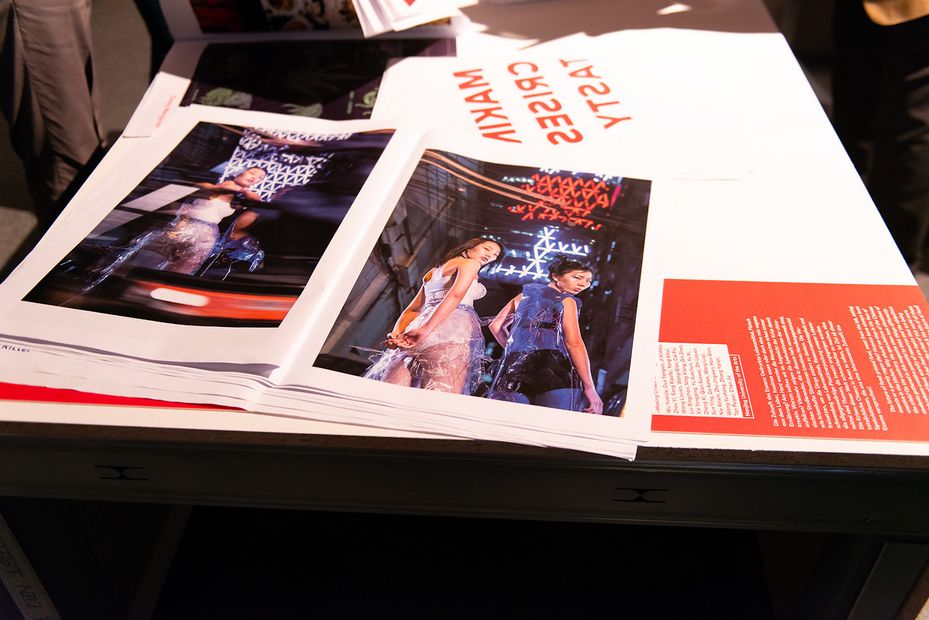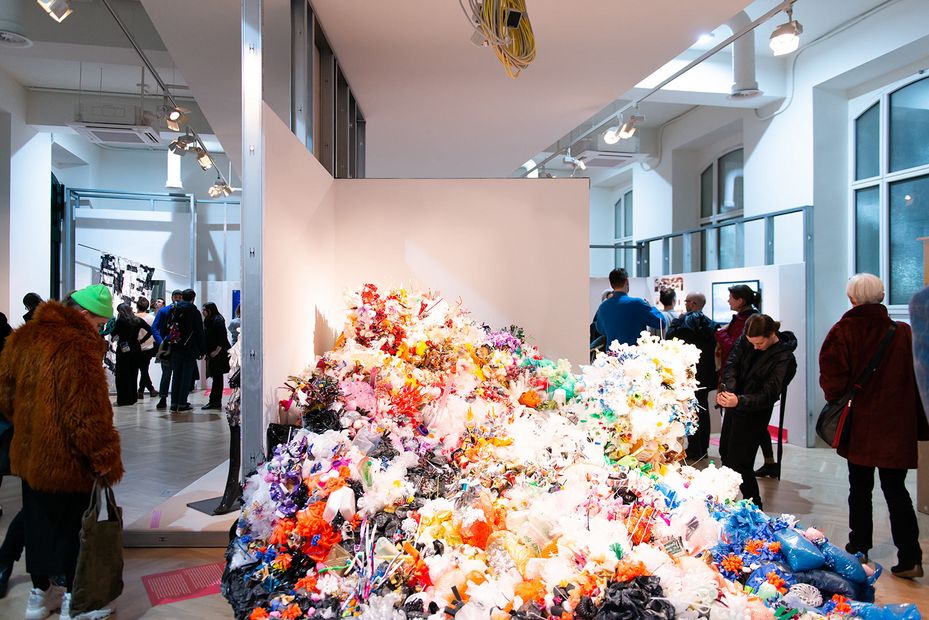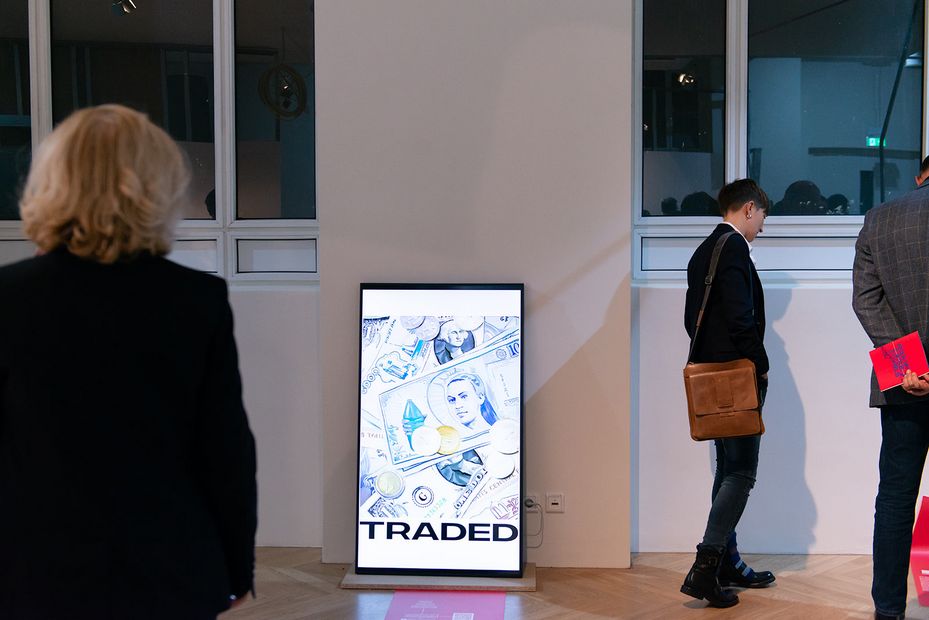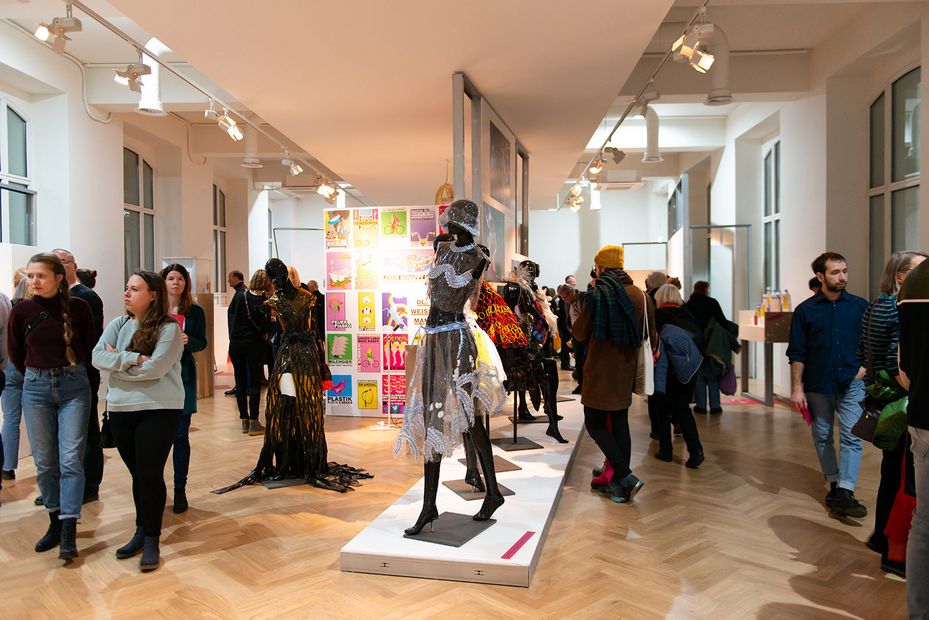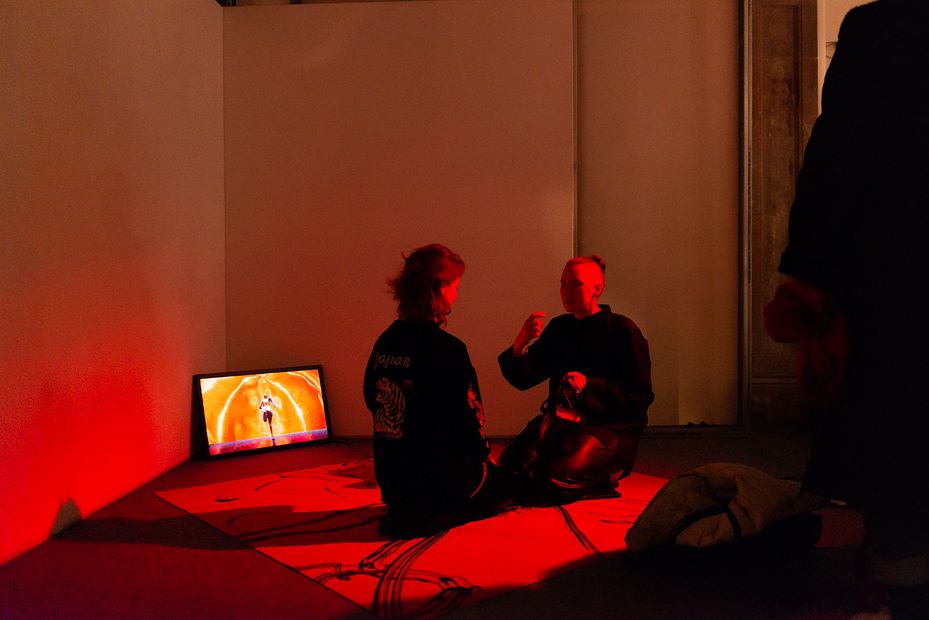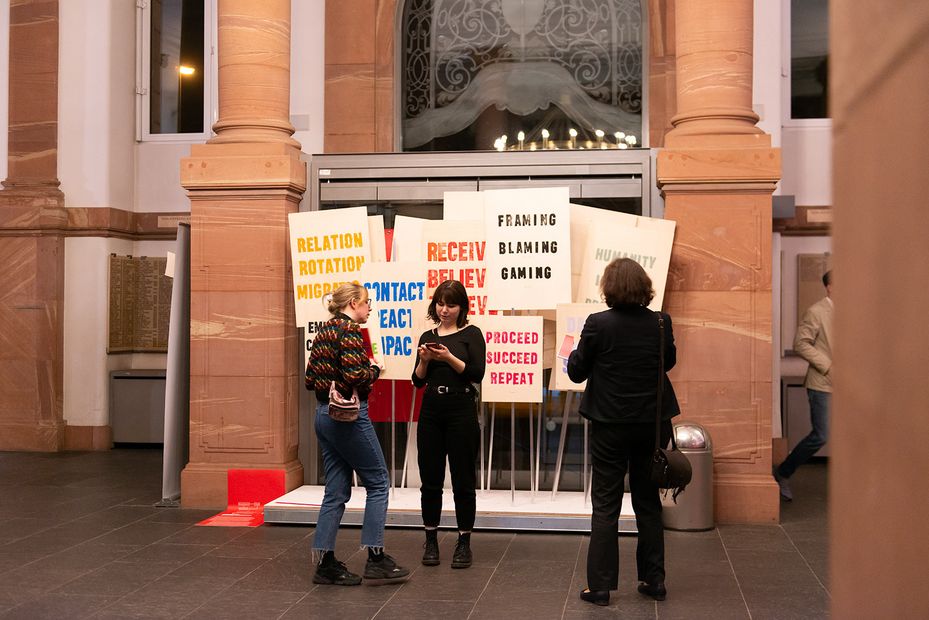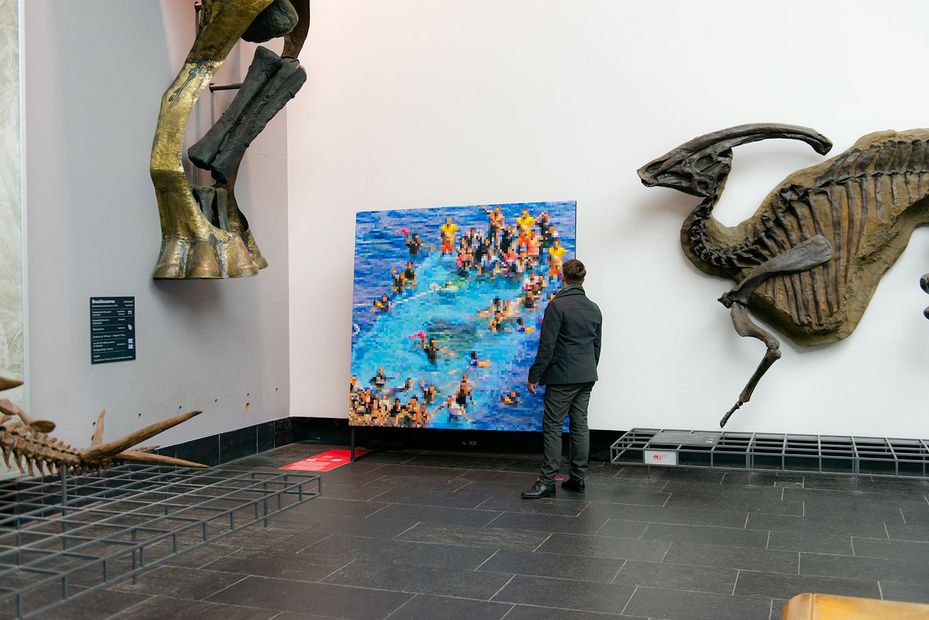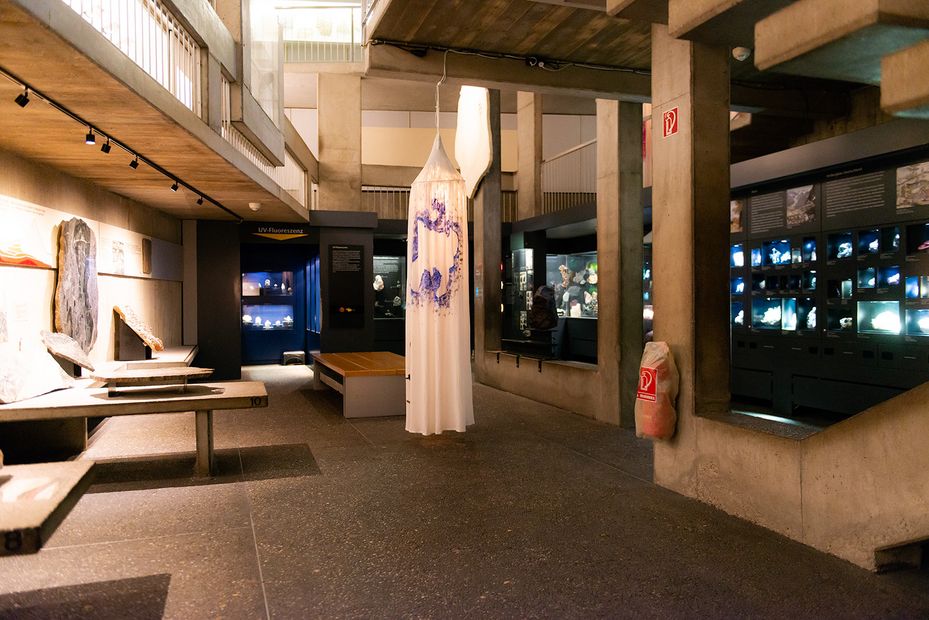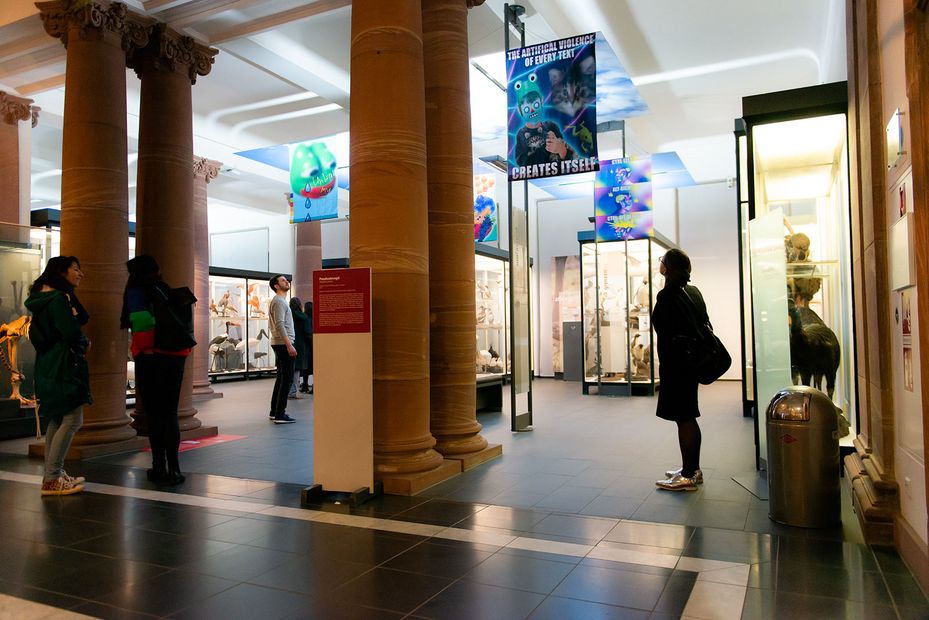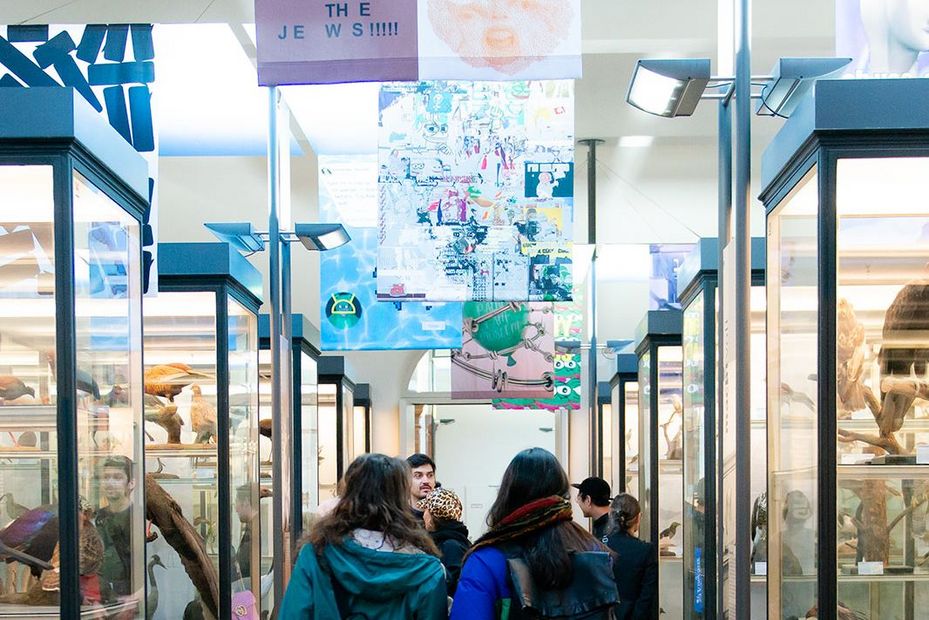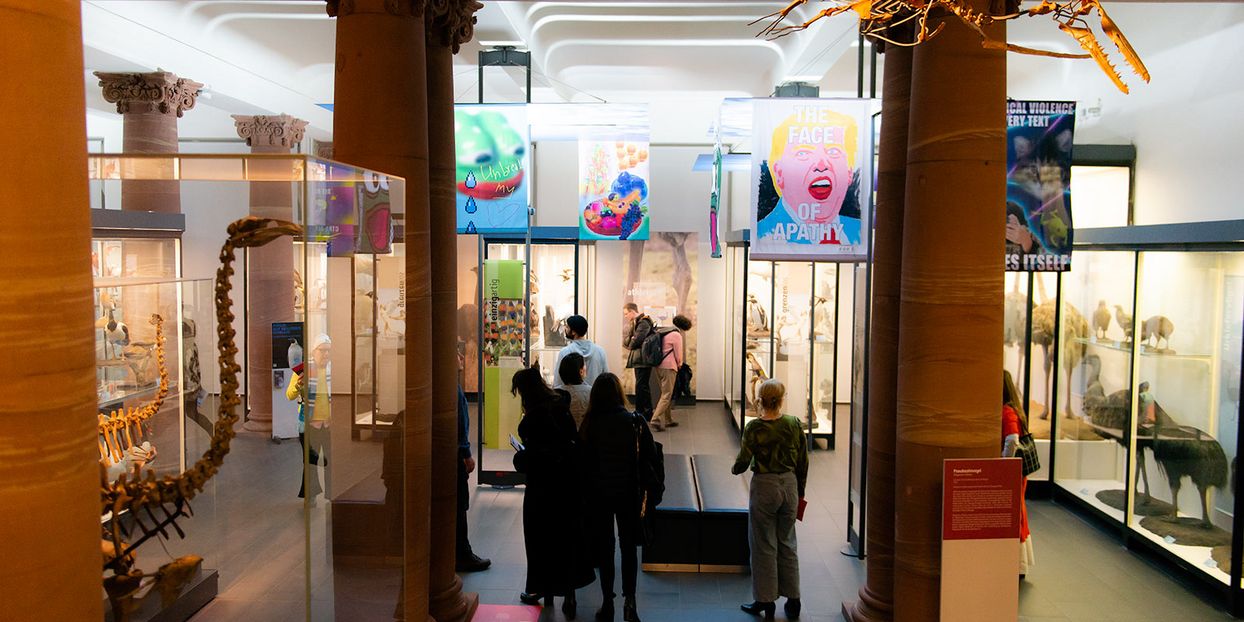
Aus Wissenschaft wird Kunst: »Making Crises Visible«
Special exhibition "Making Crises Visible" focuses on crises, war and conflict - on view at the Senckenberg Museum Frankfurt until 2 June 2020
The result is extraordinary work that is definitely worth seeing
Nicole Deitelhoff, spokeswoman of The Leibniz Research Alliance
Wars, crises and conflicts dominate the news that reaches us daily. The exhibition "Making Crises Visible" invites us not to react helplessly to this situation, but to react actively. The focus lays on the encounter between art, design and science. This triad opens up new perspectives on current topics such as migration, climate change or radicalisation. A total of 50 artistic works by students of the University of Art and Design in Offenbach show research results of the Leibniz Research Network "Crises of a Globalised World", which can be seen at various stations in the Senckenberg Museum. Patron of the show is Angela Dorn, Minister for Science and Art of the Federal State of Hessen, the project was coordinated by the Peace Research Institute Frankfurt (PRIF).
Fictitious rice plants grow around the stump of the sequoia tree in the Senckenberg Museum's permanent botany exhibition - new genetically manipulated species that could perhaps alleviate the shortage of resources in the future? A 16 square metre carpet shows the cramped layout of a typical refugee accommodation and how people live there. On the upper floor, a coral reef made of numerous plastic packages extends into the room.
30 human rights articles printed on a rescue foil line the exhibition room on human evolution and the primeval human "Lucy". Like the proverbial red thread, red areas mark these and many other works of art that can be seen throughout the museum and that were created by students of the University of Art and Design Offenbach during the last two semesters. Together with researchers from the Leibniz Research Alliance "Crises of a Globalized World" and the Research Alliance "Normative Orders", the young artists developed creative ideas for the visualization of research results. "The result is extraordinary work that is definitely worth seeing," says Prof. Dr. Nicole Deitelhoff of PRIF.
In a changing society, we provide our visitors with scientific facts and artistic inspiration to initiate new ways of interaction and exchange in the museum. This is the basis for actively shaping our future together
Katrin Böhning-Gaese, Vice-President of the Leibniz association
Science is relevant to society, but often very complex, abstract and sometimes difficult to understand. But how can research on crises, wars and conflicts be transported - how can it be made visible? The "Making Crises Visible" project has ventured this attempt. "The combination of science, art and design offers an extraordinary potential through which we want to actively stimulate a dialogue on topics of global importance. In a changing society, we provide our visitors with scientific facts and artistic inspiration to initiate new ways of interaction and exchange in the museum. This is the basis for actively shaping our future together and we are very happy to support this," explains Prof. Dr. Katrin Böhning-Gaese, Director of the Senckenberg Science and Society Programme. Prof. Klaus Hesse from the University of Art and Design Offenbach explains: "Posters, objects, films and installations have been created in research areas such as resource scarcity, radicalisation, environmental crises, the Anthropocene and its consequences, crises of the liberal world order or crises of international norms, which appeal to the public in very different and unexpected ways." In the central exhibition room on the second floor, the concept of crisis and the rhetoric of crisis are also addressed and the overall project is presented. More detailed information on the visualized scientific projects is also available there to take away.
The artistic examination of the research projects should on the one hand visualise their procedures and results in an exemplary manner, and on the other hand create an awareness of the not only paralysing but also activating power of crises. "Crises are not just the mere exacerbation of a problem, but a transformation process with immense creative potential that can form a starting point for a new orientation," says Deitelhoff. The aim of the project is to reflect this and to stimulate public perception and dialogue on crises in society. Visitors are invited to become part of a creative solution process in an experimental exchange of opinions. A further aim of the project is to promote the transfer of knowledge between peace and conflict research, science, art and design.
Joint press release of the Senckenberg Museum Frankfurt, the University of Art and Design Offenbach am Main and the Peace Research Institute Frankfurt.
Framework programme
Numerous events offer the opportunity to deepen the topic and to illuminate its various facets. In addition to lectures and panel discussions in the Senckenberg Nature Museum, Goethe University Frankfurt offers thematic workshops. The all-day climate symposium "All the world's future" on 25 April 2020 in cooperation with the EKHN Foundation and SEEHOF focuses on current knowledge, different perspectives and new ideas on climate change, environmental pollution and biodiversity loss. The satellite exhibition Making Crises Political will be shown at the Open House of Cultures in Frankfurt from 19 February to 1 March 2020.
